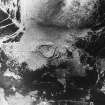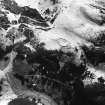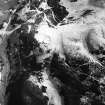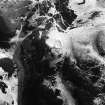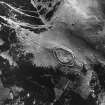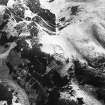Scheduled Maintenance
Please be advised that this website will undergo scheduled maintenance on the following dates: •
Tuesday 3rd December 11:00-15:00
During these times, some services may be temporarily unavailable. We apologise for any inconvenience this may cause.
Hut Knowe
Cord Rig (Prehistoric), Field System (Period Unassigned)
Site Name Hut Knowe
Classification Cord Rig (Prehistoric), Field System (Period Unassigned)
Alternative Name(s) Hut Knowe East
Canmore ID 57993
Site Number NT71NE 74
NGR NT 7940 1578
NGR Description From 793 158 to 794 155
Datum OSGB36 - NGR
Permalink http://canmore.org.uk/site/57993
- Council Scottish Borders, The
- Parish Hownam
- Former Region Borders
- Former District Roxburgh
- Former County Roxburghshire
NT71NE 74 793 158 to 794 155.
Cordrig apparently broadly contemporary with field-system of late 1st millennium bc.
S P Halliday 1986.
Field Visit (21 February 2000)
NT71NE 74
Hut Knowe
Field System; Cord Rig
NT 79415 15632
A field system comprising at least six separate fields and cord rig cultivation lie on the gentle slopes to the N, W and SE of Hut Knowe settlement (NT71NE 57). The cord rig cultivation within these fields covers an area of at least 1 ha.
Recent aerial photographs (RCAHMSAP 2000, D 46334 CN, D 46334 CN) show a bank associated with the field system to the W extending from NW to SE, over the settlement walls, to meet the axial stony bank which runs from SSW to NNE through the settlement.
Visited by RCAHMS (AGCH) 21 February 2000, with additional information from RCAHMS (BM) 1 June 2012
Note (March 2017)
Discovery, Excavation and the Origins of Research
Although the earthworks of the Hut Knowe settlement have long been known, the palisaded site on the ridge about 400m to the NW was not discovered until 1982 following intensive ground survey. This was a compelling find, but it was the presence of cord rig cultivation in their immediate vicinity that aroused particular interest, as it was the recovery of such rig-systems that was the primary aim of this episode of archaeological fieldwork.
However, the quest had begun several years earlier.
In 1972, excavators at the Roman fort at Rudchester on Hadrian’s Wall were surprised to discover the remains of a series of narrow, earthen ridges beneath barrack blocks of the early 2nd century AD. These evidently predated the Roman occupation, but it did not occur to them initially that they had discovered the surface of a pre-Roman field. However, they did recognise some plough-marks, running in three different directions in the underlying clay, while noting that the orientation of the best-preserved of these appeared to be on the same axis as the superimposing ridges.
Although the survival of prehistoric rig cultivation in the present-day landscape was hardly imaginable at the time, the archaeologists realised from the discovery of plough marks elsewhere along the line of the Wall that the rigs at Rudchester were unlikely to be unique. Indeed, it was this that inspired two recent graduates, Peter Hill and Stratford Halliday, to keep a weather eye for surface traces when they were investigating prehistoric settlements in the Cheviots in the mid-1970s. They were already familiar with prehistoric cultivation, having excavated a cutting containing evidence of spade-digging in the sand dunes of Islay in 1976. In time, they learned of new discoveries of diminutive rig systems in decidedly prehistoric contexts from excavations in Arran, Perthshire and County Mayo - all supposedly spade-dug.
In 1980, Gordon Maxwell of RCAHMS, photographed from the air what he thought might be traces of narrow rig cultivation radiating from the outer rampart of the fort on Arbory Hill, Lanarkshire. However, it wasn’t until the following year when Stratford Halliday and Peter Corser were investigating a settlement at Gibb’s Hill, Dumfriesshire, that the latter drew his colleague’s attention to the intermittent traces of rig on the SSW side of the fort. It was clear that these were directly comparable with those that had been glimpsed at Rudchester almost ten years before.
The Expansion of Knowledge
Encouraged by these developments, Halliday and Hill laboriously analysed hundreds of aerial photographs in search of more examples. This quickly yielded additional instances in the Borders and Professor Dennis Harding of Edinburgh University undertook further aerial reconnaissance, in the course of which he also photographed the newly discovered cord rig at Hut Knowe.
The existence of these rig-systems posed many questions. How were they formed? Were they permanent or temporary elements in the landscape? Why ridges and what grew upon them? Could they be closely dated? What was their chronological range? How geographically wide-spread were they? . . . and so on.
Few could be answered at the outset, but it was in the unenclosed plots below the palisaded site at Hut Knowe North that in June 1983, Peter Hill and Diana Murray (joined by Halliday) opened up a pair of cuttings and began the first detailed investigation of cord rig as it survives in the today's landscape. Hill's report is exemplary, but remains unpublished.
Since then much has been learned and answers to some of the questions have been found. The ground appears to have been ploughed before the rigs were hand-set using something like a hoe, because no trace of spade-digging has yet been noted accompanying the plough marks in the subsoil. There is also nothing to suggest that mould boards helped create the ridges. The settings, themselves, were impermanent, being occasionally knocked down and reformed on differing axes to keep the soil in good heart; while the rigs’ corrugated character helped drain and aerate the soil, so maintaining ideal conditions for growth. The relative narrowness of the individual ridges allowed access via the furrows, so facilitating planting and weeding. Cereals were grown, but dating remains difficult. Nevertheless, rig systems were in use from at least the early 2nd millennium BC and continued to be set into the 1st millennium AD.
The discovery of extensive fields of cord rig in the Borders was historically important, not least because it laid finally to rest the persistent myth that the rural economy in Scotland was predominately pastoral in prehistory. Today more than 225 sites are known in Scotland and at least 188 in England, but the greatest concentration of all is still to be found in the Borders.
As for the term ‘cord rig’, itself: it is a simile derived from corduroy.
Gillam, J P, Harrison, M and Newman, T G 1973 Interim Report on Excavations at the Roman Fort of Rudchester, 1972 Archaeologia Aeliana Ser 5, 1, 81-5
Halliday, S P, Hill, P H and Stevenson, J B 1981 Early Agriculture in Scotland, in Mercer, R J (ed) Farming Practice in British Prehistory (Edinburgh) 55-65
Halliday, S P 1982 Later Prehistoric Farming in South-East Scotland, in Harding, D W (ed) Later Prehistoric Settlement in South-East Scotland (University of Edinburgh Department of Archaeology Occasional Paper No 8) 74-91
Hill, P [1983] Survey and Excavations at Hut Knowe North, Hownam, Roxburghshire, June 4th-10th 1983 HES MS78/9
Halliday, S P 1986 Cord Rig and Early Cultivation in the Borders Proc Soc Ant Scot 116, 584-5
A. T. Welfare, Archaeology Project Manager
Sbc Note
Visibility: This is an upstanding earthwork or monument.
Information from Scottish Borders Council















































































